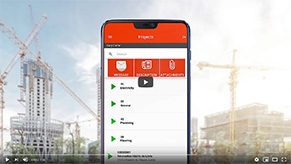
13 November, 2024
Mobile-Punch
SHARE
How to optimize labor costs through greater transparency of hours worked
Labor costs represent a significant portion of a company’s total expenses, making them a crucial element of profitability. To optimize labor costs, companies must first establish clear visibility into the actual hours worked by their employees. This can be achieved through effective tools such as a work hour calculator application, which facilitates precise and real-time tracking. This transparency enables managers to quickly identify financial losses and improve decision-making processes. Managing both direct and indirect personnel costs requires a structured approach based on accurate and reliable data. Companies can achieve this by adopting modern tools like Mobile-Punch’s online timesheets, optimizing work schedule management through the app, and regularly analyzing productivity metrics. These methods not only reduce operational costs but also enhance overall organizational efficiency.
Understanding Labor Costs
Effectively managing a company’s human resources requires a solid understanding of the complex structure of labor costs. This understanding allows businesses to identify optimization opportunities and improve operational efficiency.
Defining Direct and Indirect Costs
Labor costs fall into two main categories: direct costs and indirect costs. Direct costs include wages for workers directly involved in production or service delivery, associated payroll taxes, and overtime pay. Indirect costs cover administrative expenses, training fees, and personnel management-related costs.
| Cost Type | Examples in Construction |
| Direct | Worker wages, payroll taxes, equipment |
| Indirect | Administration, training, supervision |
The Importance of Accurate Time Tracking
Precise time tracking also minimizes time theft at work, a common issue that can significantly impact a company’s profitability. Substantial savings can be achieved by drastically reducing the time spent processing worked hours, among other administrative management costs.
Impact on Business Profitability
Staff productivity can be measured by dividing the company’s revenue by the total hours worked. Well-managed labor costs should not fluctuate significantly from week to week unless there is a considerable change in sales volume. Proper schedule planning plays a vital role in stabilizing costs and optimizing productivity. Regularly analyzing attendance data and identifying potential areas for improvement help businesses maintain an optimal productivity rate, which not only reduces costs but also enhances staff accountability and operational efficiency.
Implementing Time and Attendance Tracking Tools
Digital transformation of time tracking tools is revolutionizing how companies manage their workforce, particularly with tools like an electronic agenda for better organization. This technological evolution, powered by solutions like Mobile-Punch, allows businesses to significantly optimize labor costs while improving the accuracy of collected data.
Benefits of Digital Systems vs. Traditional Methods
| Aspect | Digital System | Traditional Method |
| Accuracy | Automatic minute-accurate calculations | Prone to manual errors |
| Accessibility | Real-time data availability | Significant processing delays |
| Administrative Costs | Significant cost reduction | High administrative burden |
| Compliance | Automatic regulation tracking | Risk of non-compliance |
Key Features to Look For
An effective time and attendance management system should include features like those provided by Mobile-Punch’s dispatch software:
- Mobile clock-in with geolocation for field teams
- Real-time productivity dashboards
- Detailed reports of hours worked
- Integrated project work orders
Integration with Payroll Systems
Integrating Mobile-Punch’s time tracking tools with payroll systems is crucial for optimizing labor costs. This synchronization automates salary processing, reducing calculation errors and time spent on administrative management. Attendance data is automatically converted into payroll elements, ensuring maximum accuracy in remuneration calculations. Companies that adopt these solutions experience significant operational efficiency improvements and reduced payroll processing time.
Optimizing Schedule Planning
Effective schedule planning is a strategic lever for optimizing labor costs. A meticulous organization of work hours allows companies to maximize productivity while balancing operational needs with employee satisfaction.

Equitable Shift Distribution
Equitable distribution of shifts is based on a systematic approach that considers employees’ skills and availability. Tools like Mobile-Punch’s electronic agenda can help organize tasks efficiently. High-performing companies use rotation systems to ensure fair shift distribution, especially for less desirable time slots. In industries like construction, establishing a points-based system to reward employee flexibility is crucial.
| Planning Aspect | Impact on Costs |
| Fair Rotation | Reduced turnover |
| Cross-Training | Lower overtime hours |
| Proactive Planning | Improved productivity |
Reducing Overtime Hours
Managing overtime requires a proactive approach. Managers should:
- Set up automatic alerts when employees approach overtime thresholds
- Provide cross-training to teams for better workload distribution
- Regularly analyze overtime trends
Adapting to Activity Peaks
Effectively managing high-activity periods requires a sector-specific flexibility strategy. Tools like project management systems help coordinate resources more efficiently. Anticipating seasonal peaks by building a pool of qualified temporary staff ensures workforce adjustments when needed. Historical company data can predict these peaks and help optimize resource planning. A dynamic scheduling system allows quick adaptation to workload fluctuations, directly reducing labor costs while maintaining optimal service levels.
Analyzing Data for Better Decision-Making
In-depth analysis of labor data enables companies to make informed decisions to optimize operational costs. A data-driven approach provides a clear view of improvement opportunities and guides necessary strategic adjustments.
Key Indicators to Monitor
Managers should regularly track a set of essential performance indicators:
| Indicator | Description | Impact on Costs |
| Productivity Rate | Output per hour worked | Direct optimization |
| Overtime Ratio | % of overtime vs. regular hours | Expense control |
| Absenteeism Rate | Unplanned absences | Operational stability |
| Cost per Production | Total costs/production | Overall profitability |
Identifying Inefficiencies
Data analysis helps pinpoint various inefficiencies that impact labor costs:
- Task imbalances among teams
- Excessive downtime between operations
- Chronic overstaffing of certain employees
- Underutilization of available skills
Construction companies can identify such inefficiencies by analyzing detailed time reports by project and activity. This visibility allows them to optimize resource allocation and improve workforce productivity.
Strategic Workforce Adjustments
Data-driven decision-making facilitates strategic workforce adjustments. Managers can use historical trends to anticipate staffing needs and adapt resources accordingly. This approach balances workloads while maintaining quality standards. Predictive analytics tools aid in planning staffing needs with greater precision. Companies can adjust staff levels based on seasonal fluctuations and activity peaks while optimizing both direct and indirect costs. A data-driven approach also highlights cross-training opportunities to increase team versatility.
Summary and Recommendations
Optimizing labor costs relies on a comprehensive approach that combines modern technologies with effective management methods. Companies that adopt digital time-tracking systems observe significant reductions in administrative expenses while improving the accuracy of operational data. This digital transformation, paired with strategic schedule planning, enables organizations to achieve substantial savings while maintaining high productivity standards. Construction companies, in particular, benefit from increased transparency in hours worked through better resource allocation across their projects. Regular analysis of attendance data, coupled with modern management tools, empowers managers to optimize their workforce and reduce operational costs. This structured approach ensures not only enhanced profitability but also strict regulatory compliance in personnel management. To discover how Mobile-Punch can help optimize workforce management in your company, try a free demo of the application today.






